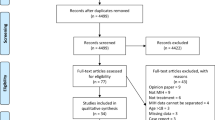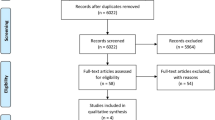Abstract
Introduction
Biodentine™ is a new version of calcium silicate-based inorganic cement.
Aim
The aim of this review is to provide a detailed analysis of the physical and biological properties of Biodentine™ and to compare these properties with those of other tricalcium silicate cements viz. mineral trioxide aggregate (MTA) and Bioaggregate™ (Bioaggregate).
Study design
A comprehensive systematic literature search for all publications to date was performed on 20th November 2013 by two independent reviewers in Medline (PubMed), Embase, Web of Science, CENTRAL (Cochrane), SIGLE, SciELO, Scopus, Lilacs and clinicaltrials.gov using the search terms Biodentine, “tricalcium silicate”, Ca3SiO5, “dentine substitute”, “dentin substitute” and RD 94. In addition to the electronic search, hand searches and reference searches were performed to include articles published in journals that were not indexed in Medline. Randomised control trials (RCT), case control studies, case series, case reports, in vitro studies, animal studies and short communications in English language were considered for this review.
Conclusions
Considering the superior physical and biologic properties, Biodentine™ could be an efficient alternative to MTA to be used in a variety of clinical applications. There appears to be a wide range of clinical applications where Biodentine™ could be used in the field of endodontics, dental traumatology, restorative dentistry and pediatric dentistry. Although it seems to be good clinical practice, currently there is little clinical evidence to support all potential indications.

Similar content being viewed by others
References
Aggarwal V, Singla M, Miglani S, Kohli S. Comparative evaluation of push-out bond strength of ProRoot MTA, Biodentine, and MTA Plus in furcation perforation repair. J Conserv Dent. 2013;16:462–5.
Atmeh AR, Chong EZ, Richard G, Festy F, Watson TF. Dentin-cement interfacial interaction: calcium silicates and polyalkenoates. J Dent Res. 2012;91:454–9.
Bogen G, Chandler N. Pulp preservation in immature permanent teeth. Endod Topics. 2012;23:131–52.
Camilleri J, Kralj P, Veber M, Sinagra E. Characterization and analyses of acid-extractable and leached trace elements in dental cements. Int Endod J. 2012;45:737–43.
Camilleri J. Investigation of Biodentine as dentine replacement material. J Dent. 2013;41:600–10.
Camilleri J, Grech L, Galea K, et al. Porosity and root dentine to material interface assessment of calcium silicate-based root-end filling materials. Clin Oral Investig 2013a [Epub ahead of print].
Camilleri J, Sorrentino F, Damidot D. Investigation of the hydration and bioactivity of radiopacified tricalcium silicate cement, Biodentine and MTA Angelus. Dent Mater 2013b;29:580–593.
Chen J, Jorden M. Materials for primary tooth pulp treatment: the present and the future. Endod Topics. 2012;23:41–9.
Dammaschke T. A new bioactive cement for direct pulp capping International Dentistry—Australasian edition. 2012;7:52–8.
De Souza ET, Nunes Tameirao MD, Roter JM, et al. Tridimensional quantitative porosity characterization of three set calcium silicate-based repair cements for endodontic use. Microsc Res Tech 2013;76:1093–8.
El-Ma’Aita AM, Qualtrough AJ, Watts DC. The effect of smear layer on the push-out bond strength of root canal calcium silicate cements. Dent Mater. 2013;29:797–803.
Gandolfi MG, Taddei P, Siboni F, et al. Fluoride-containing nanoporous calcium-silicate MTA cements for endodontics and oral surgery: early fluorapatite formation in a phosphate-containing solution. Int Endod J. 2011;44:938–49.
Goldberg M, Pradelle-Plasse N, Tran XV, Colon P. Emerging trends in Biomaterials; VI-2-1 physico-chemical properties. Oxfordshire: Coxmoor Publishing Company; 2009.
Grech L, Mallia B, Camilleri J. Characterization of set intermediate restorative material, Biodentine, Bioaggregate and a prototype calcium silicate cement for use as root-end filling materials. Int Endod J. 2013a;46:632–41.
Grech L, Mallia B, Camilleri J. Investigation of the physical properties of tricalcium silicate cement-based root-end filling materials. Dent Mater. 2013b;29:e20–8.
Guneser MB, Akbulut MB, Eldeniz AU. Effect of various endodontic irrigants on the push-out bond strength of Biodentine and conventional root perforation repair materials. J Endod. 2013;39:380–4.
Han L, Okiji T. Uptake of calcium and silicon released from calcium silicate-based endodontic materials into root canal dentine. Int Endod J. 2011;44:1081–7.
Han L, Okiji T. Bioactivity evaluation of three calcium silicate-based endodontic materials. Int Endod J. 2013. doi:10.1111/iej.12062.
Khan SIR, Ramachandran A, Deepalakshmi M, Kumar KS. Evaluation of pH and calcium ion release of mineral trioxide aggregate and a new root-end filling material. E J Dentistry. 2012;2:166–9.
Kokate SR, Pawar AM. An in vitro comparative stereomicroscopic evaluation of marginal seal between MTA, glass inomer cement and biodentine as root end filling materials using 1 % methylene blue as tracer. Endodontology. 2012;24:36–42.
Komabayashi T, Spangberg LS. Comparative analysis of the particle size and shape of commercially available mineral trioxide aggregates and Portland cement: a study with a flow particle image analyzer. J Endod. 2008;34:94–8.
Koubi G, Colon P, Franquin JC, et al. Clinical evaluation of the performance and safety of a new dentine substitute, Biodentine, in the restoration of posterior teeth—a prospective study. Clin Oral Investig. 2013;17:243–9.
Koubi S, Elmerini H, Koubi G, Tassery H, Camps J. Quantitative evaluation by glucose diffusion of microleakage in aged calcium silicate-based open-sandwich restorations. Int J Dent. 2012;2012:105863.
Laurent P, Camps J, de Meo M, Dejou J, About I. Induction of specific cell responses to a Ca(3)SiO(5)-based posterior restorative material. Dent Mater. 2008;24:1486–94.
Laurent P, Camps J, About I. Biodentine(TM) induces TGF-beta1 release from human pulp cells and early dental pulp mineralization. Int Endod J. 2012;45:439–48.
Leiendecker AP, Qi YP, Sawyer AN, et al. Effects of calcium silicate-based materials on collagen matrix integrity of mineralized dentin. J Endod. 2012;38:829–33.
Meschack RA, Velkrishna K, Chakravarthy P, Nerali J. Overview of root end filling materials. Int J Clin Dental Sci. 2012;3:63–9.
Nikhil V, Arora V, Jha P, Verma M. Non surgical management of trauma induced external root resorption at two different sites in a single tooth with Biodentine: a case report. Endodontology. 2012;24:150–5.
Nowicka A, Lipski M, Parafiniuk M, et al. Response of human dental pulp capped with biodentine and mineral trioxide aggregate. J Endod. 2013;39:743–7.
Odabas ME, Bani M, Tirali RE. Shear bond strengths of different adhesive systems to biodentine. Sci World J. 2013;2013:626103.
Perard M, Tricot-Doleux S, Pellen-Mussi P, Meary F, Perez F. Evaluation of the cytotoxicity of pulp floor perforation filling materials by using in parallel 2d and 3d culture models. Bull Group Int Rech Sci Stomatol Odontol. 2011;50:42–3.
Perard M, le Clerc J, Meary F, et al. Spheroid model study comparing the biocompatibility of Biodentine and MTA. J Mater Sci Mater Med. 2013;24:1527–34.
Poplai G, Jadhav S, Hegde V. Effect of acidic environment on the push-out bond strength of BiodentineTM. World J Dentistry. 2012;3:313–5.
Rada RE. New options for restoring a deep carious lesion. Dent Today. 2013;32(102):104–5.
Raskin A, Eschrich G, Dejou J, About I. In vitro microleakage of Biodentine as a dentin substitute compared to Fuji II LC in cervical lining restorations. J Adhes Dent. 2012;14:535–42.
Sawyer AN, Nikonov SY, Pancio AK, et al. Effects of calcium silicate-based materials on the flexural properties of dentin. J Endod. 2012;38:680–3.
Shayegan A, Jurysta C, Atash R, Petein M, Abbeele AV. Biodentine used as a pulp-capping agent in primary pig teeth. Pediatr Dent. 2012;34:e202–8.
Strassler HE, Levin R. Vital pulp therapy with pulp capping. Dent Today. 2012;31:98 (100, 102–103; quiz 104–105).
Tran XV, Gorin C, Willig C, et al. Effect of a calcium-silicate-based restorative cement on pulp repair. J Dent Res. 2012;91:1166–71.
Valles M, Mercade M, Duran-Sindreu F, Bourdelande JL, Roig M. Influence of light and oxygen on the color stability of five calcium silicate-based materials. J Endod. 2013;39:525–8.
Vayron R, Karasinski P, Mathieu V, et al. Variation of the ultrasonic response of a dental implant embedded in tricalcium silicate-based cement under cyclic loading. J Biomech. 2013;46:1162–8.
Zanini M, Sautier JM, Berdal A, Simon S. Biodentine induces immortalized murine pulp cell differentiation into odontoblast-like cells and stimulates biomineralization. J Endod. 2012;38:1220–6.
Zhou HM, Shen Y, Wang ZJ, et al. In vitro cytotoxicity evaluation of a novel root repair material. J Endod. 2013;39:478–83.
Conflict of interest
The authors did not receive any funding and report no conflict of interest.
Author information
Authors and Affiliations
Corresponding author
Additional information
S. Rajasekharan, L. C. Martens, R. G. E. C. Cauwels and R. M. H. Verbeeck shared first authorship and contributed equally to this work.
Rights and permissions
About this article
Cite this article
Rajasekharan, S., Martens, L.C., Cauwels, R.G.E.C. et al. Biodentine™ material characteristics and clinical applications: a review of the literature. Eur Arch Paediatr Dent 15, 147–158 (2014). https://doi.org/10.1007/s40368-014-0114-3
Received:
Accepted:
Published:
Issue Date:
DOI: https://doi.org/10.1007/s40368-014-0114-3




